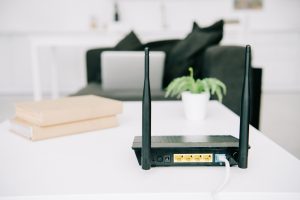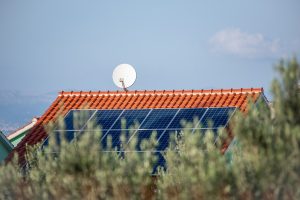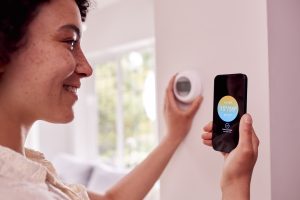An Electrical Installation Condition Report (EICR) is a comprehensive safety assessment that evaluates the condition of your property’s electrical installation. Whether you’re a homeowner, landlord, or business owner, understanding what an EICR involves and ensuring your property is prepared can save you time, money, and potential safety concerns. At Martin Kaine Electrical, we conduct hundreds of EICR inspections annually and want to help you understand what to expect and how to prepare.
Many property owners approach EICR inspections with uncertainty, unsure of what the process entails or worried about potential findings. However, with proper preparation and understanding, an EICR becomes a valuable tool for maintaining electrical safety and compliance rather than a source of stress.
Understanding EICR Requirements
Legal Obligations for Landlords Since 2020, private landlords in England must obtain valid EICRs for rental properties at least every five years, with new tenancies requiring reports no older than five years. Similar regulations apply across Scotland and Wales, with specific timescales and requirements varying by jurisdiction.
Homeowner Considerations Whilst homeowners aren’t legally required to obtain EICRs, many choose to do so for insurance purposes, before property sales, or simply for peace of mind. Insurance companies increasingly request electrical certificates, particularly for older properties.
Commercial Property Requirements Business premises typically require EICRs every five years, though high-risk environments or properties with heavy electrical usage might need more frequent inspections. Commercial property owners should verify specific requirements with qualified electricians.
Mortgage and Insurance Implications Lenders and insurers often require recent EICRs for older properties. Having a current, satisfactory report can facilitate mortgage applications and potentially reduce insurance premiums.
What an EICR Inspection Involves
Visual Inspection Qualified electricians conduct thorough visual examinations of your electrical installation, including consumer units, socket outlets, light fittings, switches, and visible wiring. They’re looking for signs of damage, deterioration, or non-compliance with current standards.
Testing Procedures Comprehensive electrical testing measures insulation resistance, earth continuity, polarity, and RCD operation. These tests verify that protective devices function correctly and circuits maintain adequate safety margins.
Documentation Review Inspectors examine existing electrical certificates, installation records, and any previous EICR reports to understand the installation’s history and identify recurring issues.
Risk Assessment The inspection includes assessment of potential electrical hazards, considering factors like installation age, usage patterns, environmental conditions, and compliance with current regulations.
Preparing Your Property for Inspection
Ensure Access to All Areas Inspectors need access to all electrical installations, including lofts, basements, cupboards, and external areas. Clear pathways to consumer units, meter positions, and electrical accessories beforehand.
Locate Electrical Documentation Gather any existing electrical certificates, installation records, or previous EICR reports. This documentation helps inspectors understand your installation’s history and can expedite the inspection process.
Identify Circuit Functions If your consumer unit lacks proper labelling, try to identify which circuits serve which areas. This information assists inspectors and might highlight circuits requiring attention.
Remove Obstructions Clear furniture, storage, or decorations that might obstruct access to socket outlets, switches, or electrical accessories. Remember that inspectors need to examine installations behind furniture and in cupboards.
Common Issues That Affect EICR Outcomes
Outdated Consumer Units Old fuse boards lacking RCD protection frequently result in EICR code recommendations. Properties with pre-1990s consumer units almost invariably require upgrades to meet current safety standards.
Missing or Inadequate Earthing Proper earthing arrangements are crucial for electrical safety. Properties with inadequate earthing systems, missing earth bonds, or corroded earth connections often receive unsatisfactory EICR outcomes.
Damaged or Deteriorated Wiring Visible damage to cables, socket outlets showing signs of overheating, or deteriorated insulation all contribute to unsatisfactory inspection results.
Non-Compliant Installations Electrical work that doesn’t comply with current standards, whether due to poor workmanship or regulatory changes since installation, typically results in code recommendations.
EICR Coding System Explained
Code C1 – Danger Present These codes indicate immediate danger requiring urgent remedial action. Properties with C1 codes are considered unsafe for continued use until faults are rectified.
Code C2 – Potentially Dangerous C2 codes highlight potentially dangerous conditions that could become hazardous under fault conditions. These require prompt attention, typically within 28 days.
Code C3 – Improvement Recommended C3 codes suggest improvements that would enhance safety but don’t represent immediate dangers. These recommendations should be addressed during future electrical work.
Code FI – Further Investigation Required FI codes indicate areas requiring additional investigation to determine appropriate action. These typically arise when inspectors cannot fully assess installations due to access limitations.
Addressing Common Preparation Questions
Can I Remain in the Property During Inspection? Yes, EICR inspections rarely require extended power disconnection. However, brief interruptions might occur during testing, so consider timing around work schedules or important activities.
How Long Does an EICR Take? Typical domestic EICR inspections take 2-4 hours, depending on property size and installation complexity. Commercial properties or those with extensive electrical installations might require longer.
What If Issues Are Found? Inspectors explain any issues discovered and provide written reports detailing required remedial work. You can then arrange necessary repairs before receiving your final EICR certificate.
Do I Need to Be Present? Whilst not essential, being present allows you to ask questions and understand any issues identified. If you cannot attend, ensure someone familiar with the property can provide access.
Maximising EICR Value
Address Obvious Issues Beforehand Simple problems like damaged socket faceplates, loose switches, or missing earth bonds can be addressed before inspection, potentially improving outcomes and reducing costs.
Consider Planned Electrical Work If you’re planning electrical improvements, discuss timing with your electrician. Sometimes it’s cost-effective to complete upgrades before EICR inspection rather than addressing code recommendations afterwards.
Understand Regulatory Changes Electrical regulations evolve continuously. Installations that complied with standards when installed might not meet current requirements, resulting in code recommendations that don’t reflect poor workmanship.
Plan for Potential Outcomes Budget for potential remedial work, particularly in older properties. Understanding possible costs beforehand prevents surprise expenses and allows informed decision-making.
Choosing the Right Inspector
Qualification Requirements EICR inspections must be conducted by qualified electricians with appropriate competence and registration. Verify that your chosen electrician holds current qualifications and registration with recognised schemes.
Experience and Reputation Choose electricians with extensive EICR experience who understand both testing procedures and regulatory requirements. Local reputation and customer reviews provide valuable insights into service quality.
Comprehensive Reporting Quality EICR providers offer detailed reports explaining findings, required actions, and timescales. They should be available to discuss results and provide guidance on addressing any issues identified.
Competitive Pricing Whilst cost is important, the cheapest option isn’t always best. Focus on value, considering qualification levels, experience, and report quality alongside pricing.
Post-Inspection Considerations
Understanding Your Report Take time to understand your EICR report thoroughly. Quality electricians explain findings clearly and answer questions about required actions or recommendations.
Addressing Code Recommendations Prioritise C1 and C2 codes promptly, as these represent safety concerns. C3 codes can be addressed during future electrical work but shouldn’t be ignored indefinitely.
Maintaining Documentation Keep EICR certificates safe and accessible. You’ll need them for insurance claims, property sales, or future electrical work. Consider digital copies for backup purposes.
Planning Future Inspections Schedule next EICR inspections appropriately, considering legal requirements, insurance needs, and installation age. Regular inspections help maintain electrical safety and identify issues before they become serious problems.
At Martin Kaine Electrical, we believe preparation is key to successful EICR inspections. Understanding the process, addressing obvious issues beforehand, and choosing qualified inspectors ensures you receive maximum value from your electrical safety assessment.
If you need an EICR inspection or want guidance on preparing your property, contact our experienced team. We’re committed to providing thorough, professional inspections that help you maintain electrical safety and compliance with confidence.
Remember: EICR inspections should only be conducted by qualified, registered electricians who can provide appropriate certification and professional advice.




